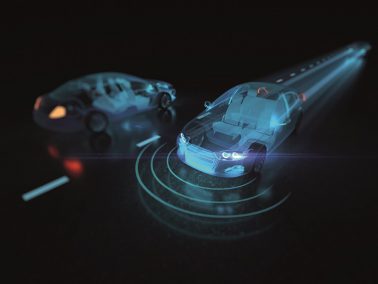Autonomous Vehicles: The race is on

Whether they are referred to as robot-cars, driverless cars or self-driving cars, autonomous vehicles (AVs) are those which don’t need physical human assistance to get where they are going. It’s a difficult concept to grasp for many of us because, whether we travel by bicycle, bus or train, a person is always in control. However, autonomous cars have undertaken numerous hours of testing in the USA and, despite not being widely available, they are considered to herald the start of computer-managed driving.
The technologies involved in the production of driverless cars are cutting-edge, with state of the art proximity sensors, like those used for automatic parallel parking, along with GPS navigation and automated steering. They also have cameras with an array of lasers that ‘read’ the road in a 3D format, ensuring that road signs are adhered to and hazards, including people, are avoided.
A brief history of self-driving cars
We’ve had self-propelling weapons, aircraft and lunar rovers for decades, but it was not until the 1970s that the Japanese firm Tsukuba Mechanical created a slow-moving but autonomous passenger vehicle, and the move to self-driving cars began in earnest.
A second important step came in the 1980s when engineer Ernst Dickmanns added cameras and software to cars to detect obstacles on the road and boost safety. DARPA, the American Defence Advanced Research Projects Agency, sent self-driving cars along a challenging 150-mile route in 2004 with limited success, but had made huge progress by 2007 with four autonomous cars completing a complex 60-mile route.
By 2009, Google engineers were working on self-driving technology, renaming their self-driving unit Waymo and running successful tests on public roads beginning in 2015. A Waymo factory was announced in 2019 where they convert minivans from Jaguar, Chrysler and other manufacturers into autonomous vehicles.
The big trends around autonomous vehicles
Along with the Waymo factory, a raft of autonomous taxi services are preparing for launch in the USA, and this has placed driverless cars at the centre of some interesting trends.
- Conventional car forms will change – The vehicles that emerge as purpose-built AVs may look nothing like the customised driverless cars which are currently being used. Future cars won’t be retrofitted, leaving manufacturers free to design a new vehicle without a driving position. It will still need seating, lighting and windows, but the interior layout could change dramatically with more space for reclining, and luxuries like onboard TVs and advanced connectivity.
- Governments are adjusting their regulations – New technology places pressure on governments to catch up in terms of legislation and that is happening across the world. Making a driverless car street legal will be a long process but inroads are being made. Proposed acts like the ultimately unsuccessful AV START in the US and comments from the UK Department for Transport suggest that driverless cars could be on the road by 2021, meaning the technology is being taken seriously at the highest level.
- Collaborations are winning – Companies don’t want to waste millions on failed ideas, so they are joining together to minimise their losses and share information. We already know that Waymo is partnered with established car manufacturers and Honda will be working with General Motors, but more recently Volkswagen and Ford have confirmed a collaboration on self-driving vehicles.
How will autonomous vehicles benefit businesses?
For many businesses, travel is essential, whether it is in the form of meetings or transporting goods. In the future, driverless cars will be able to save a company money and time in various ways.
- Driving will become more efficient – Software is a smoother driver than humans and without needless acceleration or braking, fuel efficiency will be increased.
- Better time-keeping – Drivers can be late because they’ve lost their way or got caught in traffic, but an AV will find the best and fastest route automatically.
- Schedules are opened up – With no driver, food and shopping deliveries can take place around the clock.
- Staff are freed up – When a business relies on staff for deliveries, they can use an AV instead and keep their staff on the premises to carry out other tasks.
What problems could arise?
Some accidents have already been reported involving self-driving cars and however innovative they become, some people will continue to doubt their safety. Primarily, with a lack of human interaction, the car cannot react to nuanced forms of communication like eye contact and therefore cannot accurately predict how another driver may react. For businesses, the legal side of owning a driverless car is another concern, as the burden of responsibility is not yet defined. Finally, even if a company feels able to trust its driverless fleet and has adequate insurance, the cost of each self-driving car is likely to be very high. However, rental services could bridge the gap until these advanced vehicles become more affordable.
